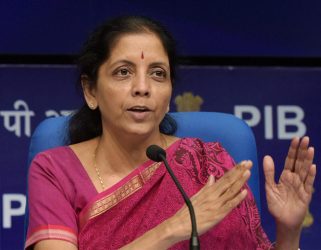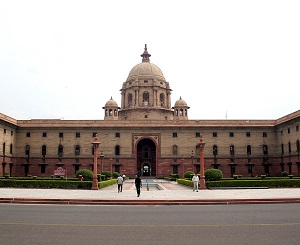
The Union Minister for Finance and Corporate Affairs, Smt. Nirmala Sitharaman tabled the Economic Survey 2018-19 in Parliament today. The Economic Survey says, “India, with a per-capita energy consumption of about one-third of the global average, will have to increase its per capita energy consumption at least 2.5 times to increase its real per capita GDP by $5000 per capita, in 2010 prices, to enter the upper-middle income group.” It adds, “If India has to reach the HDI level of 0.8, it has to increase its per capita energy consumption by 4 times.” This will require huge resources that would also need to increase with time, the Survey notes.
The Survey further says that though India accounts for around 18 percent of world’s population, it uses only around 6 percent of the world’s primary energy. India’s per capita energy consumption equals 0.6 tonnes of oil equivalent (toe) as compared to the global per capita average of 1.8 toe.
Referring to the close link between energy consumption and various social indicators, the Economic Survey says, “Energy is the mainstay of the development process of any economy. The priority for the government is ensuring access to sustainable and clean energy sources.” India’s economic future and prosperity is dependent on her ability to provide affordable, reliable and sustainable energy to all her citizen, the Survey concludes.
Energy Efficiency- A win-win situation
Noting that energy efficiency is a strategy that can lead to a win-win situation through better utilization of energy resources, the Economic Survey says, “Future policy direction should orient itself to enhanced energy efficiency programmes in different sectors of the economy as well as technological solutions to better utilize the natural resource endowments of the country for greater prosperity.”
Referring to a BEE study, the Survey says that, “Energy efficiency program has resulted in total cost savings worth Rs 53,000 crore (approx) in 2017-18 and contributed in reducing 108.28 Million Tonns of CO2 emissions. The contribution is largely from three major programs – Perform Achieve and Trade (PAT), UJALA and Standards & Labelling Programme.”
The Survey further notes that India’s energy intensity of GDP started declining at a much lower level of per capita GDP as compared to the developed world. India’s primary energy intensity of GDP has fallen from 0.0004 toe in 1990 to 0.0002 toe in 2017.







Leave a Reply
You must be logged in to post a comment.